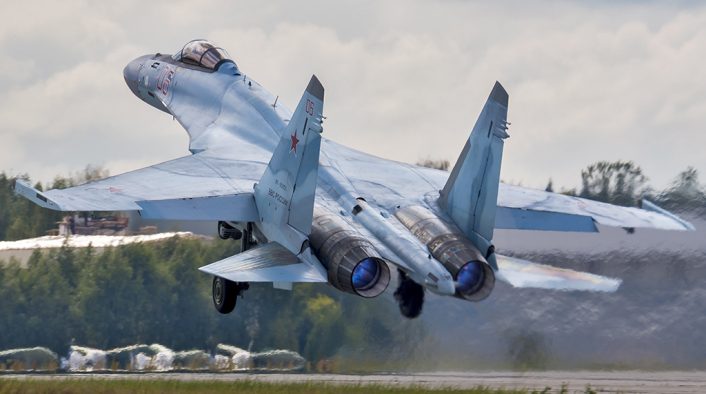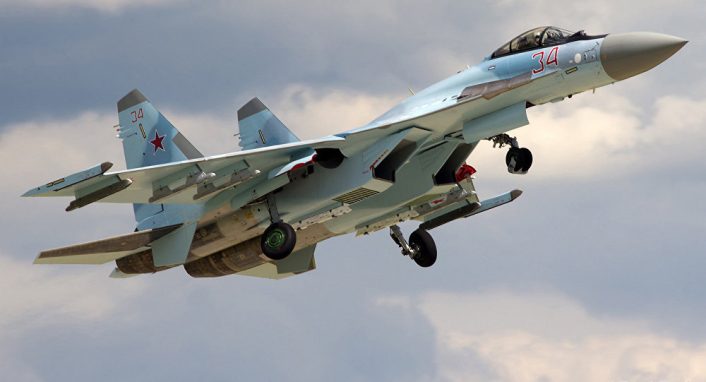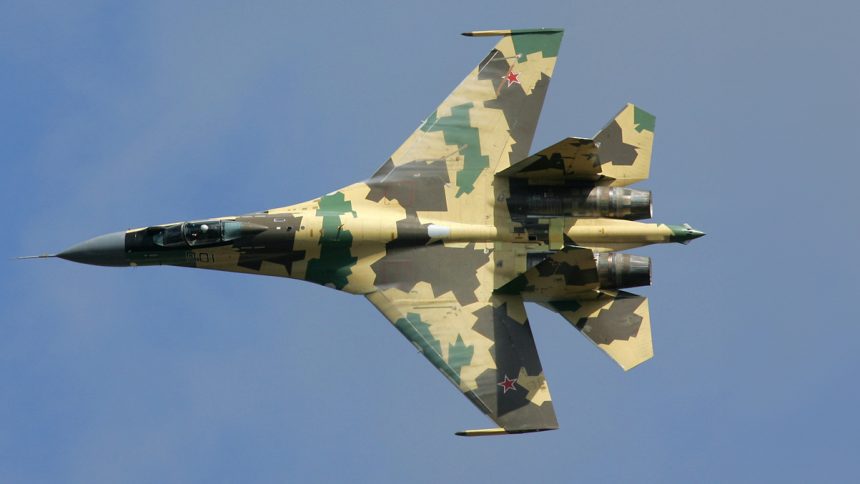According to some media reports, the long-awaited delivery of the Su-35S Flankers to Iran would be imminent. There are reasons to take these claims with a grain of salt though.
As per a report from the Iranian state news agency, Student News Network (SNN), Tehran is set to receive the first batch of aircraft from a total order of 24 Su-35 “Flanker-E” jets as early as next week.
Iran finalised arrangements with Russia for a package of military aircraft last year. In November 2023, the Iranian semi-official Tasnim news agency, reported that Deputy Defense Minister Brigadier General Mahdi Farahi had confirmed finalized plans for the procurement of Sukhoi Su-35 fighter jets along with Mil Mi-28 attack helicopters, and Yak-130 jet trainers.
Since then, neither Russia nor Iran released any other detail about the deal, however, it’s worth highlighting that the delivery of two dozen Flanker-E jets will not alter the balance of forces in the region; at least not until Iranian pilots are trained up to the Full Combat Readiness status and gain some experience on the type, and not before a significant number of Su-35s are delivered, but would represent an important step towards modernization of IRIAF.
Delivery of the Yak-130
In September 2023, images surfaced online depicting the first Yak-130 Mitten aircraft delivered to the IRIAF (Islamic Republic of Iran Air Force). Initial reports indicated that these jets were undergoing testing at Iran’s 8th Tactical Air Force Base near Isfahan, in preparation for the training of the first group of six Iranian Yak-130 instructor pilots in Russia. As elaborated in our report, this acquisition of new trainers signified a significant step towards modernizing Iran’s Air Force, which predominantly comprises Soviet/Russian and U.S. aircraft procured before the 1979 revolution.

The Yak-130 can be used to train Iranian pilots to 4th generation fighters like the Su-35S “Flanker E”, the 4++ generation variant of the Su-27 Flanker aircraft, so the delivery of the first Mitten advanced jet trainer was a required step to prepare IRIAF to the transition to the new fighter.
The Iranian Su-35 saga
For years now, the purchase of the Su-35 by Iran has taken on the features of a true saga.
The possible deal was discussed several times in the past years until, in September 2022, Iranian media reported that Air Force chief Hamid Vahedi had said that the purchase of the Sukhoi Su-35 from Russia was “being considered” by the Iranian air force.
In 2023, Shahriar Heidari, a member of the Iranian Parliament’s National Security and Foreign Policy Commission, said Tehran was working to procure a series of other military equipment from Russia, including air defense systems, missile systems and helicopters. Back then, the delivery of the jets was said to be imminent: just a few months later; possibly March 2023, the beginning of the Iranian year.
Remarkably. the recent Iranian SNN report references a previous report from Kuwait’s Al-Jarida newspaper. According to the latter, Iran received several Su-35s last year, but encountered difficulties as Russia did not supply sufficient electronic and spare parts, thus limiting their effectiveness: according to the media outlet, Russia delayed providing these essential parts due to pressure from Israel and Arab Gulf countries. Now, amid heightened tensions with Israel, Iran urgently requires these components to enhance the capabilities of the Flankers.
Despite the claims, there’s been no official confirmation by either side. No other evidence is available to confirm the presence of any Su-35 in Iran. Moreover, the source. Al-Jarida, has often been linked to fake/fabricated news in the past, with someone suggesting it was used to deliver propaganda/PSYOPS messages too.

While a delivery has probably not taken place yet, it’s still possible that a few Su-35s are eventually handed over to IRIAF in the next few weeks: in such a way, Russia would reinforce its ties with Iran, a crucial ally in the region, while Tehran would have a new jet that could be used for propaganda, showcasing bolstered defense capabilities in the face of threats from Israel.
Under the weight of rigorous Western sanctions, Iran and Russia have intensified their collaboration across various pivotal domains, encompassing energy, trade, and military affairs. A tangible manifestation of this cooperation in the defense sphere is evidenced by the deployment of Iranian-manufactured Shahed-136 direct attack munitions, commonly known as “kamikaze drones,” in the Ukrainian conflict. Initially, Iran refuted allegations of supplying drones to Russia, noting that such an action would necessitate approval from the UN Security Council as per the annex to the 2015 resolution 2231 on the Iran nuclear deal, which imposed restrictions on ballistic missile activities and arms sales. However, Iran later acknowledged the transfer, asserting that it occurred prior to the outbreak of hostilities in Ukraine.
That being said, considering all the previous claims regarding the new aircraft that turned out to be fake, it’s worth being cautious and take the most recent media reports about the imminent delivery of Su-35s with a grain of salt.
Let’s wait and see what happens.









